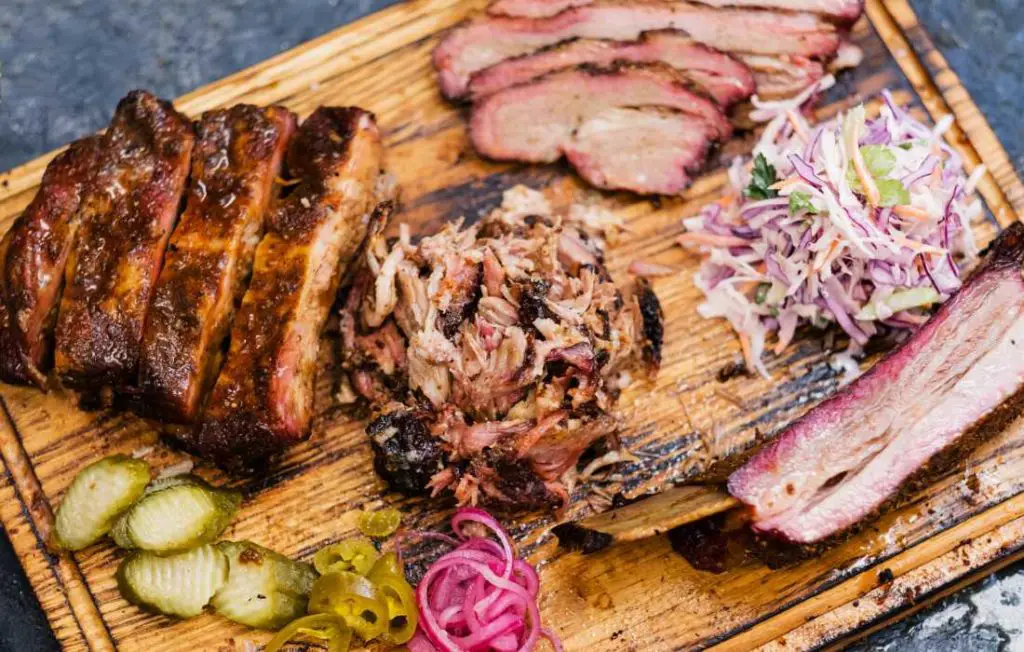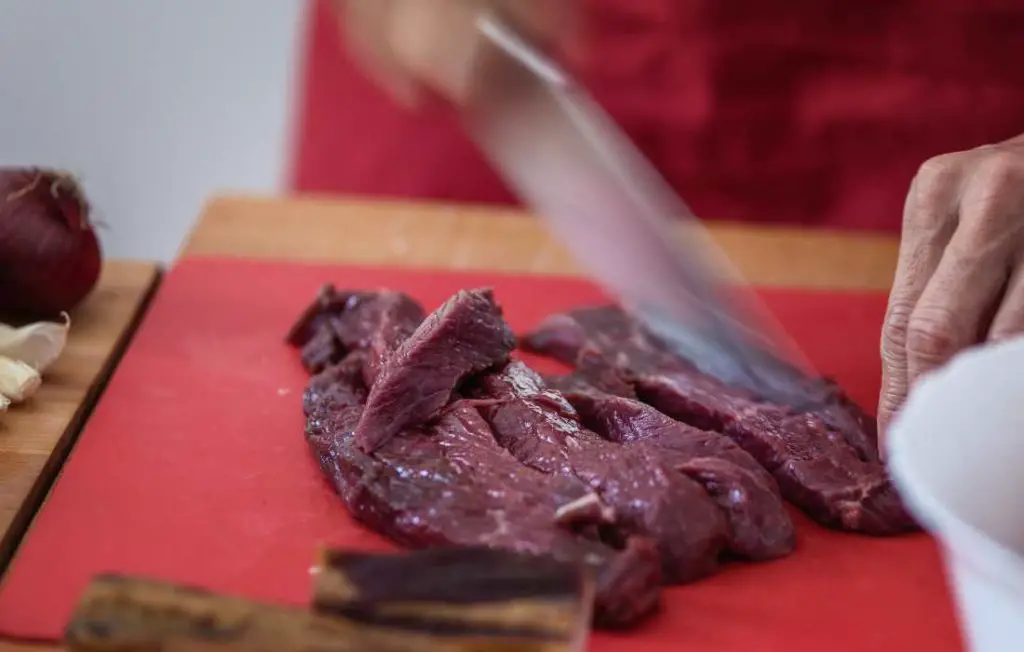Are there high-histamine meats you should avoid if you have histamine intolerance?
Life is more challenging when certain foods are like silent troublemakers, triggering histamine intolerance and causing a parade of unwelcome symptoms.
These foods, aptly known as high histamine foods, can turn your mealtime excitement into a cautious food-selection process. Understanding them is like mastering a secret code for managing your body’s histamine sensitivity.
Today, let’s unveil the histamine content hidden in different types of meat. Whether you’re a carnivore at heart or want to make smarter choices with histamine intolerance, this article will uncover the histamine levels in various types of meat.
From steaks to sausages, we’ll dissect the science behind the histamine in these proteins and help you make more informed decisions about what lands on your plate.
Decoding the Role of Histamine in Meats
First, meat can be a source of histamine, but have you ever wondered how histamine sneaks its way into your favorite cuts of meat? The story begins after the animal takes its final bow. Enzymes, those molecular magicians, break down the proteins in meat. (5)
This process creates the perfect stage for histamine to step in, a natural part of protein degradation. The longer the meat waits in the wings, the higher the histamine levels can rise. That’s why dietitians who understand histamine intolerance recommend eating only the freshest of meat.
Factors Impacting the Histamine Content of Meat
But hold on, because histamine levels in meats aren’t a one-size-fits-all deal. Some types of meat have a higher histamine content than others. Factors like processing techniques, aging, and storage conditions play the role of orchestra conductors. (1)
In terms of processing, dry aging, curing, and fermentation can elevate histamine levels, turning your tasty steak into a potential histamine-triggering dish. It’s like a delicate dance of science and culinary art that determines how histamine levels crescendo in your meaty delights.
So, let’s look at five high-histamine meats you should avoid if you have histamine intolerance, and why.

Smoked Meats
If you have histamine intolerance, avoid smoked meats, like bacon, sausage, and salami. These savory delights might be mouthwatering, but they’re also high on the histamine hit list.
Here’s why you might want to steer clear if histamine intolerance is on your radar:
When meats go through the smoking process, they become a playground for histamine production. The slow-smoking method involves prolonged exposure to temperature changes, which gives histamine-producing bacteria an open invitation to thrive.
As these bacteria feast on the meat’s proteins, histamine levels rise, potentially turning your flavorful indulgence into an unpleasant histamine trigger.(3)
Smoked meats often double as aged treats. While aging might enhance flavors, it’s like cranking up the histamine volume in the background.
The longer meats mature, the higher their histamine levels become and the more likely they are to trigger histamine intolerance symptoms.
This means that beloved smoked sausages and salami, although delicious, can pack a histamine punch that your intolerance might not appreciate.
Ever noticed that smoky flavor in your bacon or sausage? It’s not just from the smoke itself. Many smoked meats contain additives like nitrates and nitrites that contribute to their iconic taste and extended shelf life.
However, these additives can also trigger histamine release in sensitive individuals, adding an extra layer of caution.
While smoked meats might be staples for some people, they shouldn’t be your go-to dietary choice if you have histamine intolerance. If you eat smoked meat occasionally, monitor your body’s reactions.
Remember, every person’s tolerance level varies. Always keep a food journal and consult a healthcare professional who can help you make informed choices. I
f smoked meats are your culinary weakness, consider enjoying them on occasion, rather than making them a daily indulgence.
Your taste buds might protest, but your well-being will thank you in the long run.
Aged Meats
Meats are like fine wines, aging in their own way, developing flavors and textures over time. But just as wine becomes more potent with age, so do the histamine levels in certain meats. This connection between aging and histamine levels adds an interesting layer to the histamine intolerance puzzle.
As meats age, enzymes naturally break down proteins, a process called proteolysis. This process is a cornerstone of flavor development in aged meats.
But here’s the twist: proteolysis also creates a playground for histamine-producing bacteria to strut their stuff. These bacteria thrive in the protein-rich environment and feast upon the amino acids, releasing histamine as a byproduct.
The longer the aging process, the more time these bacteria have to work their histamine-producing magic. This means that while your steak might get that exquisite tenderness you desire, it also accumulates histamine along the way.
This makes it more likely to trigger those familiar histamine intolerance symptoms: headaches, hives, digestive disruptions, and all the other unwelcome effects that come with the territory.
Note that not everyone will react the same way to aged meats. Some might tolerate them in small quantities, while others might experience immediate discomfort.
Understanding your body’s signals and keeping track of your reactions to different foods can help you determine your personal tolerance levels.
So, the next time you savor an aged steak or a slice of aged cheese, remember that beneath the layers of flavor, there’s also a complex histamine story unfolding.
For those navigating histamine intolerance, it’s all about finding the delicate balance between culinary pleasures and symptom triggers.

Cured Meats
Cured meats like ham and deli meats suffer from the same problems as smoked meats. They can be higher on the histamine scale, making them less-than-ideal choices for those sensitive to histamine. Here’s why:
Cured meats take a journey through preservation processes that involve salt, nitrates, and other chemical wizards. While these techniques lend cured meats their taste, texture, and extended shelf life, they also play a role in boosting histamine levels within the meat itself.
The very methods that keep these meats fresh and flavorful can inadvertently turn them into histamine-rich indulgences for those who need to watch their histamine intake.
Often, these meats are aged, much like fine wine or gourmet cheese, and aging can increase the histamine content of meat. Although some studies find only modest boosts in histamine with cured meats (4), it’s still a food to approach with caution.
While the saltiness of ham or the convenience of deli meat might beckon, understand how these cured meats interact with histamine intolerance before adding them to your plate.
Monitoring your body’s reactions, maintaining a food diary, and seeking guidance from healthcare professionals can help you navigate your dietary choices more effectively.
If you’re determined to enjoy cured meats occasionally, remember that moderation is key. Balancing your culinary cravings with your body’s sensitivity is the name of the game.
Pre-Packed Minced Meats
If you’re navigating the maze of histamine intolerance, here’s a heads-up: pre-packaged minced meats might not be your best dining companions.
While they’re a quick and convenient option, they can also be high on the histamine scale, potentially triggering unwanted symptoms.
The histamine saga in pre-packaged minced meats often revolves around two key factors: aging and preservatives. Aging creates a breeding ground for histamine-producing bacteria.
With each passing day, histamine levels within the meat rise, adding an extra layer of complexity for those sensitive to histamine.
Adding to the mix are preservatives like nitrates, which are commonly used to enhance color and extend shelf life. While they’re handy for the meat industry, they can contribute to boosting histamine content.
It’s like a histamine double whammy, with both aging and preservatives teaming up to create a potentially uncomfortable dining experience.

Wild Game
While these meats might evoke images of rustic feasts and rich flavors, their histamine content can be a less palatable aspect. (2) Game meats, in their natural state, tend to be aged for various reasons, such as flavor development and tenderness enhancement.
However, this aging process is a double-edged sword for those sensitive to histamine.
Like other aged meats, when game meats age, they undergo proteolysis, a breakdown of proteins that can lead to the creation of histamine by bacteria. With each day that passes, histamine levels within these meats tend to rise.
This heightened histamine content can be a trigger for histamine intolerance symptoms, potentially leading to discomfort that nobody desires during mealtime.
One key contrast lies between aged and fresh meats: their histamine content. Fresh-farmed meats, unburdened by the aging process, generally carry lower histamine levels compared to their game and wild counterparts.
This is due to the absence of extended protein breakdown, which contributes to histamine production.
Choosing fresh farmed meats over game meats provides an avenue to enjoy flavorful protein sources without inadvertently fueling histamine intolerance reactions.
Making a conscious choice to opt for fresh-farmed meats over aged game meats can be a strategic step. It’s a way to relish meals without the histamine-induced hiccups and ensure a more enjoyable dining experience.
Remember, your body’s tolerance is unique, and understanding its signals can empower you to make informed decisions about the foods you enjoy.
Low-Histamine Meats That Are Safer with Histamine Intolerance
Let’s look at some meats that are safer if you have histamine intolerance:
- Fresh meat (cooled, frozen, or fresh)
- Chicken (cooled, frozen, or fresh)
- Bison
- Beef (only if unaged and not ground)
- Chicken breast, boneless
- Duck
- Eggs
- Goose
- Lamb
- Ostrich
- Pork (only if unaged and not ground)
- Alligator
Also, you can get protein from plant-based, low-histamine options. Low-histamine, whole grains are a reliable source of protein.
Strategically Balancing Culinary Desires and Histamine Intolerance
In the grand gastronomic adventure of histamine intolerance management, knowledge is your best ally. Understanding the histamine story in meat empowers you to make mindful culinary choices.
By balancing your taste preferences with your body’s sensitivity, you can craft a dining experience that satisfies your cravings without triggering unwelcome symptoms.
Refereneces:
- Taylor, Steve L et al. “A SIMPLIFIED METHOD FOR HISTAMINE ANALYSIS OF FOODS.” Journal of Food Science 43 (1978): 247-250. A SIMPLIFIED METHOD FOR HISTAMINE ANALYSIS OF FOODS | Semantic Scholar
- Hutařová, Zdeňka et al. “Biogenic amines in the meat of hunted pheasant and hare during the course of storage.” Acta Veterinaria Brno 83 (2014): 45-50. [PDF] Biogenic amines in the meat of hunted pheasant and hare during the course of storage | Semantic Scholar
- Ganowiak Z, Gajewska R, Lipka E. Wpływ zabiegów technologicznych na zawartość histaminy w przetworach rybnych [The effect of technological intervention on histamine content in fish preservation]. Rocz Panstw Zakl Hig. 1990;41(3-4):180-6. Polish. PMID: 2267557.
- Rice, Stephen L. et al. “Histamine and Tyramine Content of Meat Products.” Journal of milk and food technology 38 (1975): 256-258. Histamine and Tyramine Content of Meat Products | Semantic Scholar
- Satomi, Masataka. “Effect of Histamine-producing Bacteria on Fermented Fishery Products.” Food Science and Technology Research 22 (2016): 1-21. https://www.jstage.jst.go.jp/article/fstr/22/1/22_1/_html/-char/en

